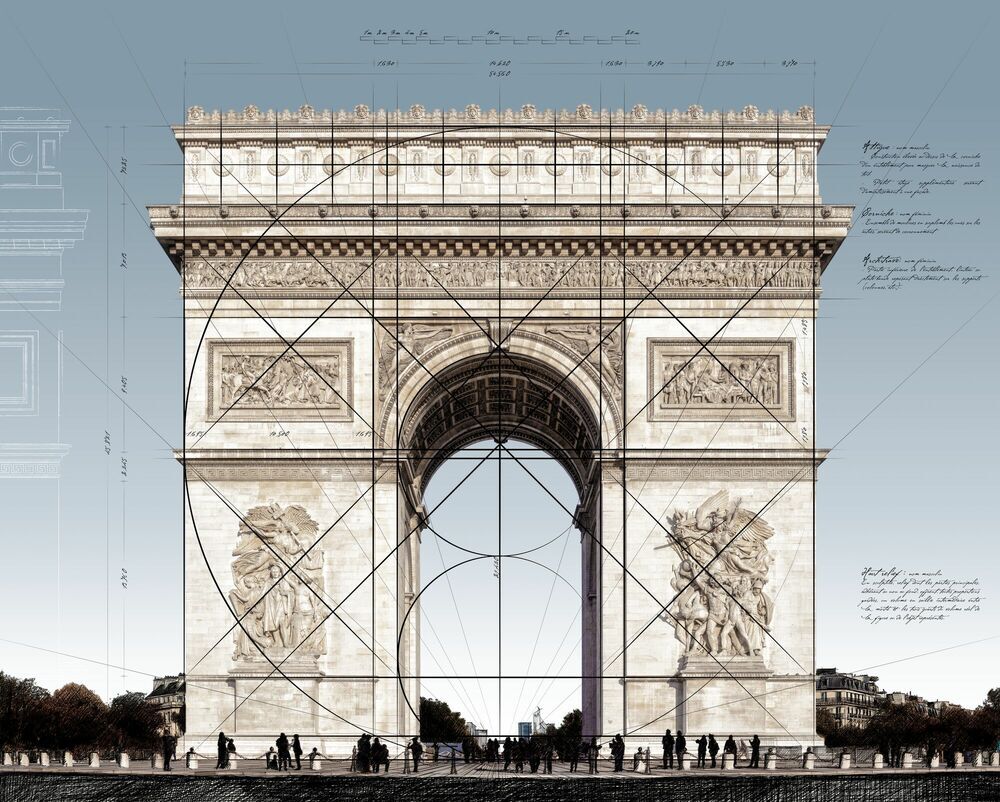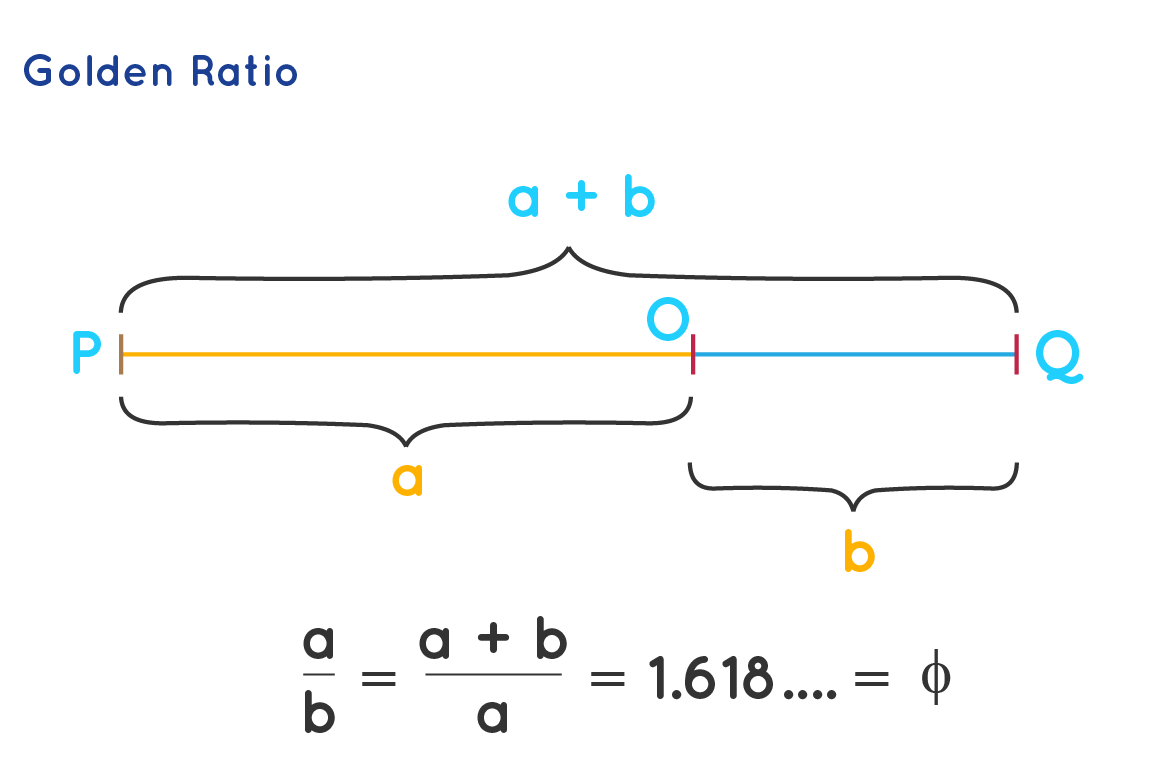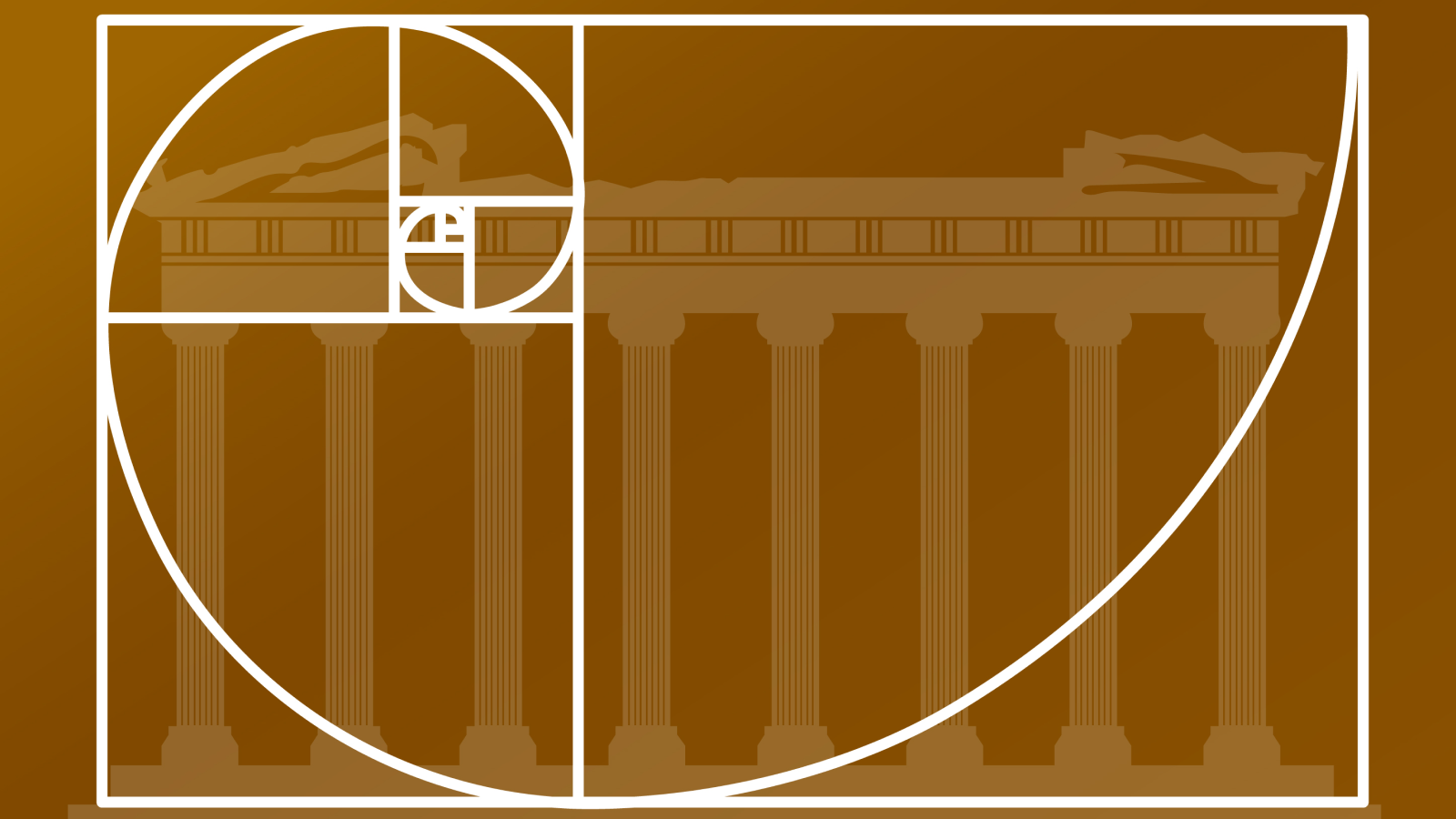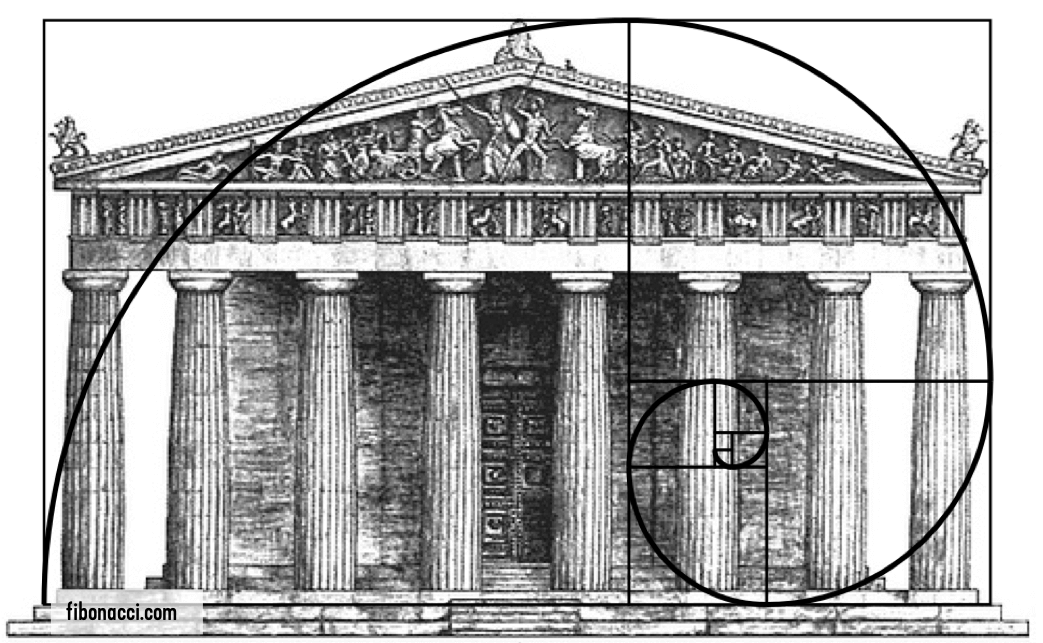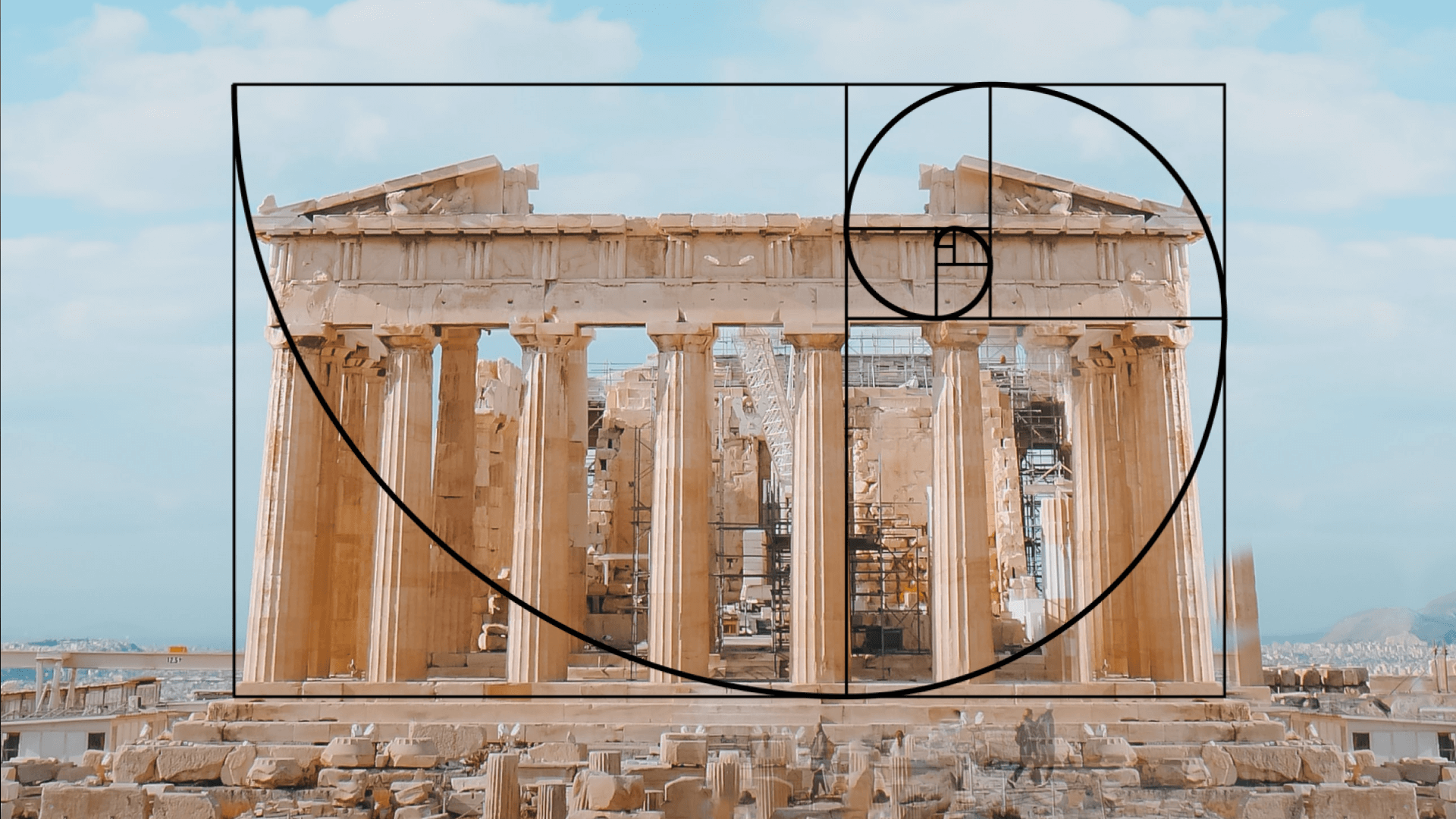
The Golden Ratio Influence Architectural Design, represented mathematically as 1:1.618, is a captivating and omnipresent phenomenon in nature and art. This divine proportion, often found in natural formations like seashells, flower petals, and even the human body, has captured the imagination of architects for centuries. Its allure lies in the perceived aesthetic harmony it brings, a balance so perfect that it is said to evoke a sense of beauty that transcends cultures and epochs.
In the realm of architecture, the Golden Ratio reigns as an essential design principle. Its application can be observed in iconic structures worldwide, from the Parthenon in Greece to the spirals of the Taj Mahal. Architects harness its proportions to create visually appealing spaces that resonate with a sense of proportionate elegance and aesthetic balance.
Historical Context Of The Golden Ratio In Architecture
The Golden Ratio, also known as the Divine Proportion or Phi (Φ), has captivated mathematicians and artists for millennia. Its allure lies in its inherent beauty and balance, a mathematical fingerprint found throughout nature and woven into the fabric of iconic architectural masterpieces. Let's embark on a journey through time, tracing the Golden Ratio's fascinating history and its enduring legacy in shaping architectural wonders.
1. Ancient Seeds Of Proportion
While the formal definition of the Golden Ratio (approximately 1.618) is attributed to the Greek mathematician Euclid around 300 BC, its seeds were sown much earlier. Evidence suggests its use in ancient Egypt, Mesopotamia, and India.
1. Egyptian Pyramids -The awe-inspiring pyramids of Giza, dating back to 2560 BC, exhibit hints of the Golden Ratio in the relationships between their base, height, and internal chambers.
2. Mesopotamian Ziggurats -These stepped temple towers, like the Ziggurat of Ur (2100 BC), showcase the Golden Ratio in their proportions, potentially linking it to celestial and spiritual significance.
3. Indian Temple Architecture -Ancient Indian temples, like the Brihadeeswarar Temple (1010 AD), incorporate the Golden Ratio in their intricate mandalas and geometric patterns, symbolizing cosmic harmony.
2. Greek Enlightenment And The Golden Rectangle
The Greeks were the first to formally study and codify the Golden Ratio. Mathematicians like Pythagoras and Euclid explored its geometric properties, while artists like Phidias incorporated it into their sculptures, most notably the Parthenon.
The Parthenon -This iconic temple dedicated to Athena exemplifies the Golden Ratio in its facade, columns, and interior layout. The rectangular base of the Parthenon itself is a close approximation of a Golden Rectangle (ratio of width to height being approximately 1:1.618).
3. Medieval Echoes And Artistic Flourishing
The Golden Ratio continued to resonate through the Middle Ages, finding expression in Islamic architecture, Byzantine mosaics, and Gothic cathedrals.
Islamic Mosques -The Alhambra Palace in Granada, Spain, showcases intricate geometric patterns and arches based on the Golden Ratio, creating a mesmerizing sense of harmony and rhythm.
Byzantine Mosaics -The Hagia Sophia in Istanbul features stunning mosaics laid out in Golden Ratio proportions, contributing to the basilica's sense of grandeur and celestial connection.
Gothic Cathedrals -The Chartres Cathedral in France exhibits the Golden Ratio in its stained glass windows, pointed arches, and overall proportions, conveying a sense of upward aspiration and divine grace.
4. Renaissance Revival And Modern Interpretations
The Renaissance rediscovered the Golden Ratio's potential, applying it to art, architecture, and even the human body. Modern architects continue to find inspiration in this timeless principle.
Leonardo da Vinci -The Renaissance polymath incorporated the Golden Ratiointo his iconic paintings, like the Mona Lisa, and architectural designs, like the Vitruvian Man, demonstrating its universality in artistic expression.
Contemporary Architecture -Even today, architects embrace the Golden Ratio in various ways, from the spiraling form of the Guggenheim Museum in New York to the proportions of the Burj Khalifa in Dubai.
Le Corbusier -The 20th-century architect Le Corbusier developed the Modulor system, a proportional scale based on the Golden Ratio and human dimensions, aiming to create harmonious and functional buildings.
The Enduring Allure Of The Golden Ratio
- The Golden Ratio's enduring appeal lies in its ability to create visually pleasing and balanced compositions. Its presence evokes a sense of order, harmony, and even sacredness. While not a magic formula, it serves as a valuable tool for architects to achieve aesthetically pleasing and structurally sound spaces.
- As we delve deeper into the history of architecture, we find the Golden Ratio woven into the very fabric of some of humanity's most awe-inspiring structures. It is a testament to the enduring power of mathematical principles and their ability to shape our understanding of beauty and proportion.
Understanding The Mathematics Behind The Golden Ratio
The Golden Ratio, also known as Phi (Φ), holds a mystical allure in the world of mathematics and architecture design. But fear not, unraveling its secrets doesn't require a degree in astrophysics! Let's break down its essence in simple terms, using visuals and everyday examples to appreciate its practical beauty.
The Equation In A Nutshell
Imagine a line segment divided into two unequal parts, a longer segment (a) and a shorter segment (b). The Golden Ratio is achieved when the ratio of the whole segment (a + b) to the longer segment (a) equals the ratio of the longer segment (a) to the shorter segment (b). In simpler terms:
(a + b) / a = a / b
This magical equation boils down to a number approximately equal to 1.618.
Spiral Patterns
The Fibonacci sequence, a series of numbers where each number is the sum of the two preceding numbers (1, 1, 2, 3, 5, 8, 13...), is closely linked to the Golden Ratio. When squares are drawn based on these numbers and their diagonals are connected, a mesmerizing spiral emerges, known as the Fibonacci spiral. This spiral can be found in nature, such as seashells and sunflowers, and is often used in architectural details like columns and staircases.
Modular Systems
Some architects, like Le Corbusier, have developed entire design systems based on the Golden Ratio and human proportions. These systems, like the Modulor, provide a set of harmonious proportions that can be applied to various elements of a building, ensuring overall coherence and visual balance.
Beyond Numbers
The Golden Ratio is not a rigid rule but a guiding principle. Its beauty lies in its ability to create visually pleasing and balanced compositions, fostering a sense of order and harmony within a space. While the math provides a framework, the true magic lies in the architect's creativity and skill in translating these proportions into functional and awe-inspiring structures.
Architectural Principles And The Golden Ratio
Let's explore how architects harness its power to create spaces that feel pleasing and harmonious.
Proportions That Sing
Imagine a rectangle where the width is roughly 1.618 times the height. This "Golden Rectangle" embodies the core principle – pleasing proportions. Look at the Parthenon's facade, for instance: its Golden Rectangle proportions create a sense of visual stability and elegance.
Symmetry With A Twist
The Golden Ratio isn't just about perfect symmetry. It thrives on the "asymmetrical balance," where elements of different sizes relate to each other in a harmonious way. Think of a spiral staircase – the wider steps at the bottom and narrower ones at the top, connected by the Golden Ratio, create a visually captivating ascension.
Harmony From The Inside Out
The Golden Ratio extends beyond facades and layouts. Architects use it to define the ideal relationship between columns, windows, and even door heights. This ensures a cohesive flow within the space, preventing any element from feeling disproportionately large or small.
The Golden Touch
The Ratio's influence isn't limited to grand structures. It can be found in smaller details like furniture proportions, decorative elements, and even the spacing of trees in a landscaped garden. Every touch contributes to a unified, balanced whole.
Famous Architectural Examples Utilizing The Golden Ratio
Let's embark on a visual journey, exploring five architectural wonders where the Golden Ratio plays a starring role:
1. The Taj Mahal, India -This monument to love whispers the Golden Ratio's secrets throughout. The base of the mausoleum is a Golden Rectangle, its arches echo the ratio, and even the intricate marble inlay patterns reveal its presence.
2. Le Corbusier's Villa Savoye, France -This modernist masterpiece embodies the "Modulor," a design system based on the Golden Ratio and human proportions. The windows, facades, and even the staircase spiral follow this harmonious principle.
3. The Fibonacci Spiral at the Guggenheim Museum, New York -This iconic museum's spiraling ramp is based on the Fibonacci sequence, closely linked to the Golden Ratio. It creates a mesmerizing journey upward, drawing visitors into the art within.
4. The Great Pyramid of Giza, Egypt -While the Egyptians might not have known the mathematical formula, the Great Pyramid's proportions hint at the Golden Ratio. The triangular faces echo the ratio, and its internal chambers exhibit similar relationships.
5. Chartres Cathedral, France -This gothic masterpiece weaves the Golden Ratio into its stained glass windows, pointed arches, and overall proportions. The soaring vaults and harmonious facade create a sense of spiritual upliftment, influenced by this timeless principle.
These five examples showcase the versatility of the Golden Ratio. It whispers elegance in the Taj Mahal, whispers function in Le Corbusier's villa, and whispers awe in the Guggenheim's spiral. From ancient pyramids to modern marvels, the Golden Ratio continues to inspire architects and captivate audiences, proving that mathematics and beauty can truly go hand in hand.
The Golden Ratio In Modern Architecture
Though used less rigidly than in the past, it remains a valuable tool for creating aesthetically pleasing and harmonious spaces. Let's explore how modern architects harness the Golden Ratio's power, aided by technology, to redefine its role in today's buildings.
Modern Applications
- Proportional Play -The Golden Ratio still shines in defining the overall proportions of buildings. The Burj Khalifa in Dubai, for instance, uses the ratio in its floor plans, creating a visually tapering effect as it rises towards the sky.
- Modular Harmony -Le Corbusier's Modulor system, based on the Golden Ratio and human proportions, finds contemporary echoes in modular design software. Architects can easily apply these proportions to various building elements, ensuring a cohesive flow.
- Algorithmic Beauty -Parametric design software, powered by algorithms, allows architects to incorporate the Golden Ratio into complex forms and structures. Buildings like the Beijing National Stadium, nicknamed the "Bird's Nest," showcase how the ratio can guide dynamic and organic shapes.
- Sustainable Solutions -The Golden Ratio can optimize resource usage. The Eden Project in Cornwall, UK, uses geodesic domes based on the ratio, maximizing interior space while minimizing materials.
Technology's Touch
Modern technology facilitates the use of the Golden Ratio in several ways:
- Visualization Tools -3D modeling software allows architects to experiment with different proportions and instantly see how the Golden Ratio influences the aesthetic and functionality of the design.
- Structural Optimizations -Engineering software incorporating the Golden Ratio can help create structurally sound and efficient buildings, reducing material waste and construction costs.
- Algorithmic Inspiration -Parametric design algorithms can generate unexpected and innovative forms based on the Golden Ratio, pushing the boundaries of architectural expression.
From harmonious proportions to bio-inspired forms, the Golden Ratio continues to inspire architects to craft modern structures that are both aesthetically pleasing and functionally efficient. As technology evolves, it will be exciting to see how this timeless principle is reinterpreted and reimagined in the buildings of tomorrow.
Critiques And Limitations Of The Golden Ratio In Architecture
Let's delve into the critical debates surrounding its use in modern architecture, acknowledging both its merits and limitations.
Arguments For Caution
1. Oversimplification of Beauty -Some argue that relying solely on the Golden Ratio can lead to formulaic and predictable designs, stifling architectural creativity and diversity. They believe true beauty lies in a broader spectrum of factors, including context, cultural influences, and functional considerations.
2. Historical Misconceptions -Critics point out that attributing historical structures like the Pyramids to a conscious application of the Golden Ratio might be inaccurate. These structures might exhibit coincidental proportions aligned with the ratio, but attributing deliberate intent can be misleading.
3. Subjective Perception -Beauty, ultimately, lies in the eye of the beholder. What resonates with one might not appeal to another. The Golden Ratio, while mathematically pleasing, might not universally translate into visually captivating architecture for all audiences.
Challenges In Modern Application
1. Functional Constraints -Modern buildings often have complex programmatic requirements that might not always mesh well with the ideal proportions dictated by the Golden Ratio. Prioritizing functionality and user experience sometimes necessitates deviating from strict adherence to the Ratio.
2. Structural Considerations -Applying the Golden Ratio to specific structural elements like load-bearing walls or beams might not always be structurally sound. Engineering principles often take precedence over purely aesthetic considerations.
3. Contextual Clashes -Buildings exist within specific environments and cultural contexts. Blindly applying the Golden Ratio without considering the surrounding landscape or architectural vernacular can lead to designs that feel out of place and lacking in context.
Finding The Balance
The key lies in acknowledging the Golden Ratio as a valuable tool, not a rigid rule. Its strengths lie in:
- Creating harmonious proportions -When used thoughtfully, the Golden Ratio can guide architects towards pleasing proportions, enhancing the visual balance and coherence of a design.
- Providing a starting point for exploration -The Ratio can serve as a foundation for creative experimentation, inspiring architects to explore variations and adaptations within its framework.
- Connecting with nature -The Golden Ratio is often found in natural forms, so incorporating it can foster a sense of connection between buildings and the natural world.
Ultimately, the Golden Ratio's success in architecture relies on its thoughtful integration within a broader design ethos. Architects must remain mindful of its limitations, prioritize functionality and context, and use it as a springboard for creative expression, rather than a strict formula for guaranteed beauty.
Conclusion
The enduring impact of the Golden Ratio in architectureis undeniable, having shaped some of humanity's most iconic and visually stunning structures throughout history. Its significance lies not only in its mathematical precision but also in its ability to evoke a sense of harmony, balance, and beauty in architectural design.
From ancient civilizations to modern-day architects, the Golden Ratio has served as a guiding principle, influencing spatial layouts, proportions, and aesthetics, ultimately contributing to the creation of captivating and timeless spaces.
